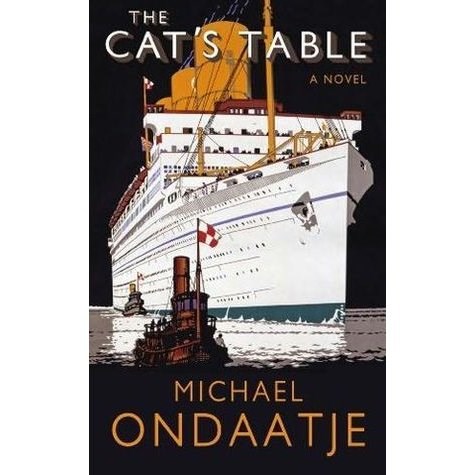Michael Ondaatje’s The Cat’s Table recounts the journey of a fictional 11-year-old Michael on a ship from Sri Lanka (Ceylon) to England in the 1950s.
The journey itself is a coming of age. Michael is being shipped from a free-spirited barefoot life in his native homeland to a life of formal education in England.
Along the way, he meets Cassius and Ramadhin, both boys traveling alone, and their adventurous spirits drive them to explore every aspect of their ship and its passengers.
Aboard the Oronsay, Michael is assigned to Table 76 which quickly becomes known as the Cat’s Table — it’s the least privileged table and is situated the greatest distance from the Captain’s Table.
While many first class guests dine with the captain, the Cat’s Table is host to an eclectic array of odds and ends.
Along with Cassius and Ramadhin, the Cat’s Table introduces Michael to Mr. Mazzapa, a musician with a checkered past who has “hit the skids,” Miss Lasqueti, a quiet woman who may have secret government connections in the U.K., and Mr. Daniels, a man growing a bountiful garden full of riches and poisons in the hold of the ship.
Other passengers reveal themselves along the way.
Asuntha is a needy, deaf girl who seems to attract mothering types. There is also the prisoner, who is brought out in chains to walk the deck in the late evening.
The three boys, on their own for the first time, are thrilled by their freedom and make the most of it. They hide in lifeboats to eavesdrop on romantic entanglements and passionate disputes. They sneak onto the deck at night to observe the prisoner and his evening constitutional. They race along the deck and throw deck chairs into the pool.
Michael is even tricked into helping another passenger rob the first class cabins.
But there is more to the boys than hi-jinks. Ramadhin is quiet and careful — a product of his weak heart. Cassius is loud and boisterous. And Michael is somewhere in between. But all three form a bond that they can’t forget.
The narrative becomes progressively serious as some of the quirky passengers reveal a dark side. As Michael grows older, he must integrate these matters into his consciousness. Did things really happen this way? Or are they the exaggerations of an 11-year-old? As Michael makes the physical journey to a more serious world, he makes an emotional journey, as well.
For other popular reading suggestions visit Richmond Public Library’s website at YourlLibrary.ca/GoodBooks.
Christine McCrea is a librarian at Richmond Public Library



